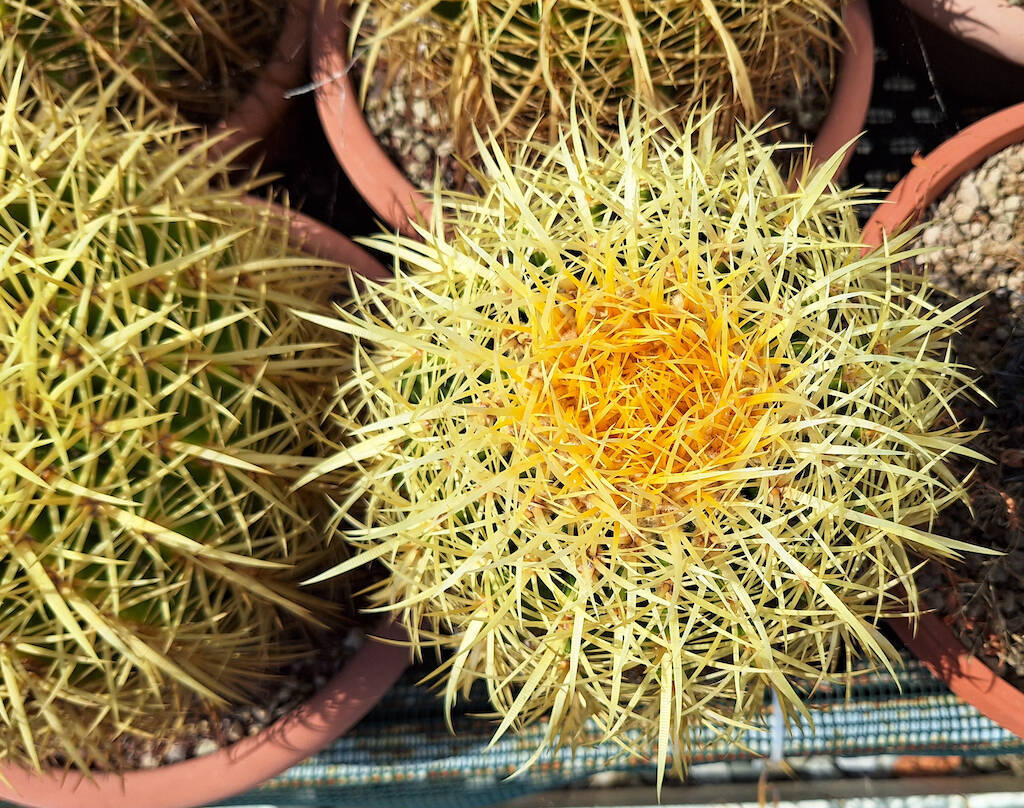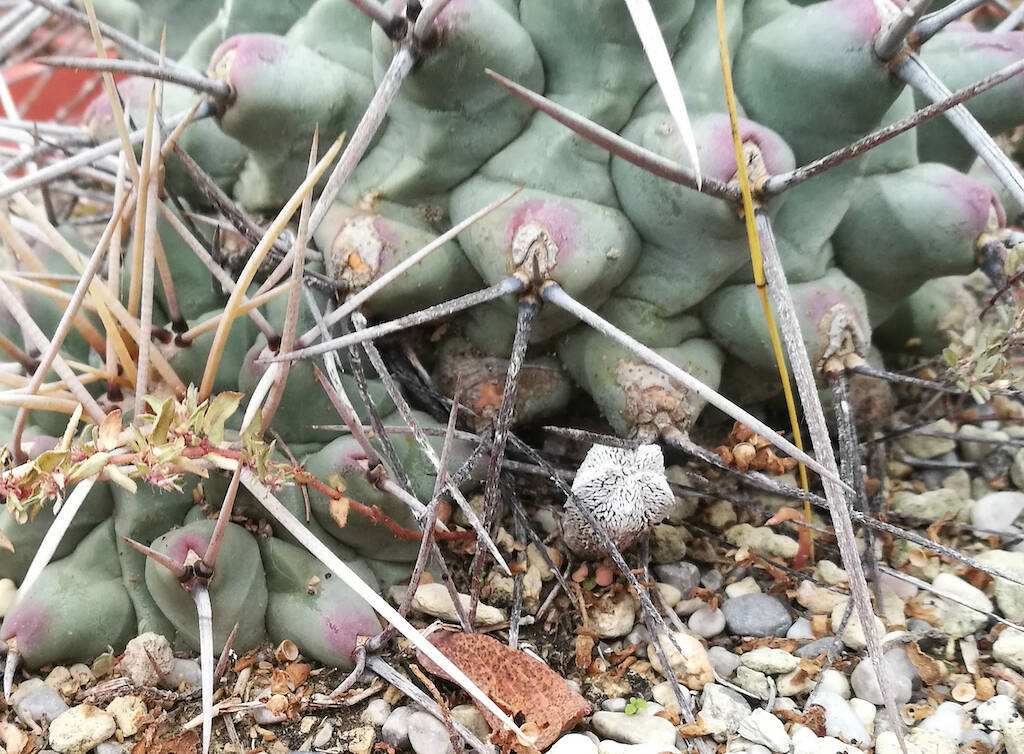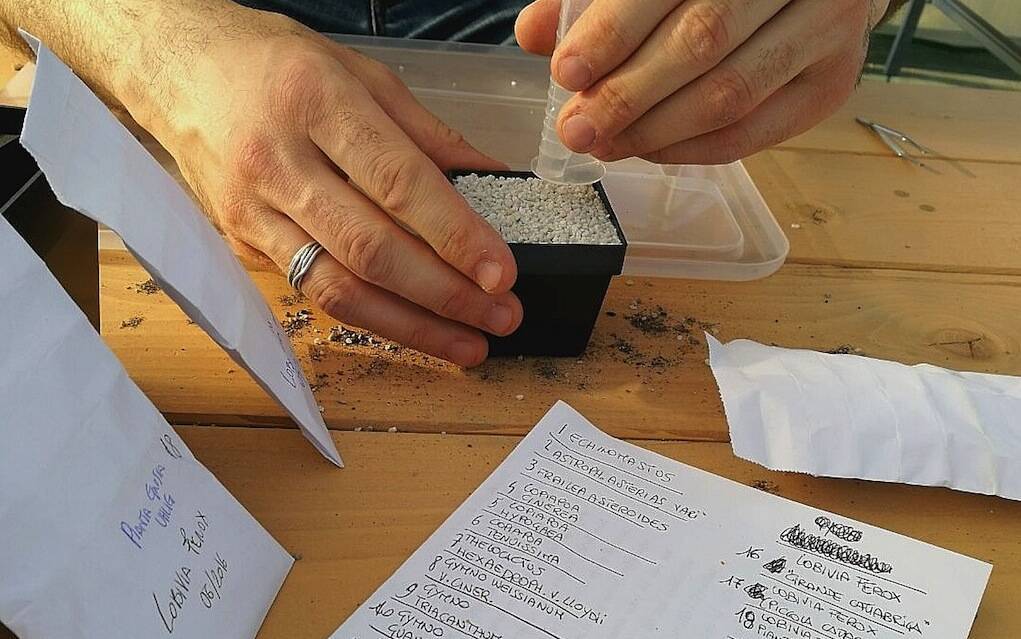Would you throw away that specimen of Echinocactus grusonii you see in the photo above? Obviously the answer is no. Indeed, with such perfect thorns it would be a crime to let such a plant die. Nevertheless, a few years ago, when that plant was still a few months old seedling, I was about to throw it away! No, I hadn’t suddenly gone crazy, simply this plant, around 2015, was just one of the many grusonii seedlings obtained with a particularly lucky sowing (that is, characterized by high germination). What you see in the picture was the only seedling born from that sowing to have reached the stage of the first repotting in pitiful conditions, to the point that, convinced that it would not even pass the first repotting, I intended to throw it together with the sowing soil. Today, almost ten years later, that malformed, underdeveloped and sickly-looking seedling has become exactly as you see it in the photo I took a few days ago.
Here, in the following article, is the story of this plant, a plant that has been able to teach me an important lesson: never judge a book by its cover. In life as well as when dealing with Nature. (…)
Per proseguire nella lettura dell'articolo Accedi o Abbonati
To continue reading the article LogIn or Subscribe





